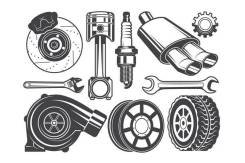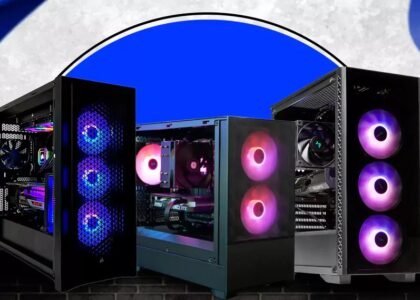Ensuring clean water flows from every faucet in your home is essential for maintaining your family’s health. While municipal water may seem clear, it often contains contaminants that could be harmful over time. For example, studies have found that almost 50% of U.S. tap water contains “forever chemicals,” which do not degrade and can cause long-term health issues.
This is where whole home water filtration systems come in. These systems are designed to remove contaminants such as chlorine, pesticides, heavy metals, and bacteria, providing your family with safe, clean water from every tap. However, with so many filtration systems available, how do you determine which one is right for your needs?
In this guide, we’ll break down the factors to consider when selecting a whole home water purifier and explore the best options to ensure your family’s water is as pure and safe as possible.
What Factors Should You Consider When Choosing a Whole Home Water Filter?
When selecting a whole home water filter, it’s crucial to evaluate several factors to ensure the system fits your needs. Here’s a breakdown of what to keep in mind:
- Water Quality in Your Area: Your local water quality greatly influences the type of filter you need. Testing your water can help you identify specific contaminants. Common issues include:
- Hard water: Water with high levels of calcium and magnesium may require a water softener in addition to a filter.
- Chemical contaminants: Chlorine, pesticides, or industrial chemicals often require a carbon filter or reverse osmosis system.
- Microbial contaminants: If your water source is untreated or prone to bacteria and viruses, a UV filter can help. Understanding the water quality in your area will help you select a filter tailored to your needs.
- Initial and Ongoing Costs: The costs of a whole home water purifier can vary widely. Be sure to consider:
- Initial purchase: Quality systems may have a higher upfront cost.
- Installation fees: Professional installation might be necessary, adding to the total cost.
- Replacement parts and filters: Many filters require regular replacement of parts, including cartridges and membranes.
- Maintenance and energy consumption: Some systems may incur additional energy costs and require periodic servicing. By assessing both initial and ongoing costs, you can ensure you choose a system that fits your budget while offering long-term value.
- Maintenance Requirements: Not all filters are created equal when it comes to maintenance. Some systems require frequent filter changes or other upkeep. Look for:
- Replacement intervals: Check how often you’ll need to replace filters and other components.
- Ease of access: Consider how easy it is to access and replace parts.
- Ongoing costs: Factor in the costs of replacement filters and service over time. Understanding these maintenance aspects will help you pick a filter that aligns with your lifestyle and doesn’t become a burdensome task.
- Flow Rate and Water Pressure: The flow rate, measured in gallons per minute (GPM), refers to how much water the filter can process at once. It’s vital to choose a system that can handle your household’s water demand without reducing water pressure. Ensure the filter can manage your peak water usage and maintain consistent performance.
- Certifications and Standards: Look for certifications like NSF/ANSI to ensure that the filter meets safety and performance standards. For example, the best RO systems have these certifications:
- NSF/ANSI 42: Addresses chlorine taste and odor.
- NSF/ANSI 53: Focuses on removing health-related contaminants like lead and cysts.
- NSF/ANSI 58: Specifically for reverse osmosis systems.
- NSF/ANSI 55: Certifies UV filters. These certifications provide peace of mind that the system has been tested for effectiveness and safety.
- Health Considerations Water filters are not just about improving taste—they also protect your family from harmful substances. Key health concerns to address include:
- Lead removal: Essential for homes with older plumbing or known lead contamination.
- Chlorine and chemicals: Long-term exposure to chlorine and other chemicals can be harmful, so look for filters that reduce these.
- Microbial pathogens: Bacteria, viruses, and protozoa can be harmful, particularly in untreated or well water. UV filters are highly effective against these threats. Selecting the right system based on these health considerations will ensure that your family is protected from waterborne risks.
The Best Types of Whole Home Water Filters
Here’s a breakdown of the most popular whole home water filter systems:
- Reverse Osmosis (RO) Systems: Reverse osmosis is one of the most effective filtration methods available. The best RO system uses a semi-permeable membrane to remove a wide array of contaminants, including heavy metals, dissolved solids, and microorganisms.
Pros:- Highly effective at removing heavy metals (like lead and arsenic).
- Provides great-tasting, clean water.
- Excellent for treating hard water and high TDS (total dissolved solids).
Cons:
- Higher upfront costs and installation requirements.
- Produces wastewater during filtration.
- Requires regular maintenance, including replacing filters and membranes.
Best For: Homes with high levels of dissolved solids or contaminants that need advanced filtration.
- Carbon Filters: Activated carbon filters are the go-to choice for improving the taste and odor of water while removing chlorine, pesticides, and other organic chemicals.
Pros:- Removes chlorine, volatile organic compounds (VOCs), and chemicals.
- Improves taste and odor.
- Affordable and relatively easy to install.
Cons:
- Doesn’t remove dissolved solids or heavy metals.
- Less effective for microbiological contaminants without additional filtration.
Best For: Households that want to improve taste and remove common contaminants like chlorine.
- Sediment Filters: Sediment filters trap large particles such as dirt, sand, and rust before they reach more sensitive filters in the system.
Pros:- Effective for removing large particles.
- Extends the life of downstream filters and appliances.
- Low-cost and low-maintenance.
Cons:
- Does not address chemicals or dissolved solids.
- Requires regular replacement of cartridges.
Best For: Pre-filtration in multi-stage systems to protect more sensitive filters.
- Water Softeners: These systems remove calcium and magnesium to reduce hardness and prevent scale buildup in pipes and appliances.
Pros:
- Extends the lifespan of plumbing and appliances.
- Improves soap performance and reduces skin irritation.
Cons:
- Requires periodic salt replenishment.
- Doesn’t remove other contaminants like chlorine or heavy metals.
Best For: Households with high water hardness, looking to extend the life of appliances and reduce scale buildup.
Conclusion
Choosing the best RO system or whole home water filter depends on your specific needs, including water quality, health concerns, and budget. Whether you need a reverse osmosis system for heavy metal removal or a carbon filter to improve taste and odor, there’s a solution available for every household. By understanding the factors that impact your decision—such as water quality, maintenance, and certifications—you can select the right whole home water purifier to protect your family’s health and ensure access to safe, clean water.






